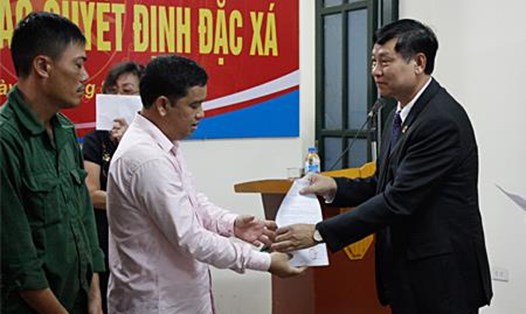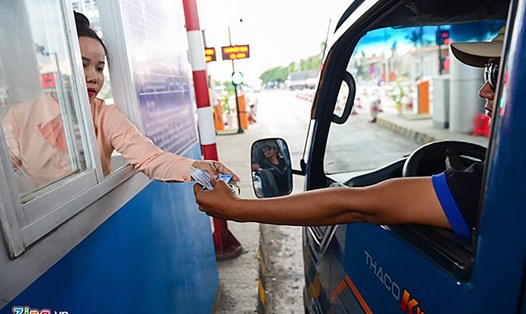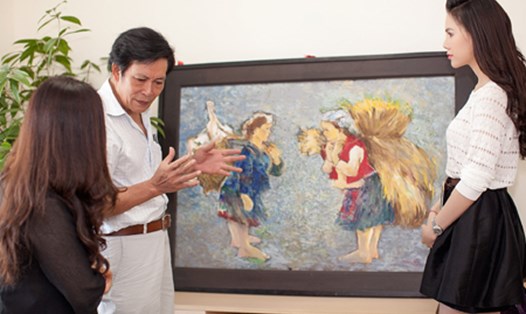A million-dollar painting appeared, but a headache was worried about "copying"
The article titled Vietnamese art has never been so popular, but the painting market is flooded with counterfeit goods by American journalist Richard C. Paddock, published in The New York Times, is receiving the attention of painting lovers around the world and the Vietnamese artist community. Because the article pointed out a series of shortcomings in the Vietnamese painting market - the problem of copying and making fake paintings - things that everyone in the profession knows but few people speak up about.
Throughout the article, author Richard C.Paddock recounted the incident that shocked the painting world a year ago, at the exhibition "ward-throwing paintings from Europe", when 15/17 paintings in the exhibition were discovered to be fake or of poor quality... Even artist Thanh Chuong discovered that his paintings had been "renamed" author Ta Ty. He spoke out to fight, but for the past year, the results and handling have not been answered.
From this incident, author Richard C.Paddock commented: The discovery of artist Thanh Chuong has exposed a scandal that shook the entire Vietnamese art world and highlighted an embarrassing truth: The Vietnamese art market (where there were paintings before the war, recently worth millions of USD) is full of lies. Although it is being recognized more and more in the international market, Vietnamese artists and traders still have to face the problem of plagiarism that is on the rise... A few paintings by To Ngoc Van and Le Van De were seen at an international auction event, while the works that look exactly like them are still hanging at the Hanoi Fine Arts Museum".
The truth is embarrassing!
Right after the article about the "copy" of paintings in Vietnam was published in the American newspaper, although the article is making world painting lovers have a hesitant view of the Vietnamese painting market, the domestic artist community shared that they are very in agreement with the point of view given by author Richard C.Paddock, although this is a "very embarrassing" truth.
Painter Pham Luc said that once he knew a facility specializing in copying his paintings, so he went to the place to get advice. Unexpectedly, before he could finish introducing his full name, the person who copied the painting wanted to talk to him "by hand and foot". Since then, he has chosen to " live with the flood", even though he knows that his paintings are forged and sold in many places, but "catches a close eye", because no one can solve it if they speak up.
According to artist Thanh Chuong, the article in the New York Times spoke very accurately about the current situation of the Vietnamese comic book market. This market has existed in our country for many years, but very few cases have been completely handled.
"It can be seen that after the discovery of fake paintings and impersonation of paintings occurred in 2016 but were not strictly handled, it still happened continuously. We had a chance to handle it thoroughly but in the end we let it go. Therefore, the cases of counterfeit paintings are still flourishing continuously. The paintings are fake in the museum and on the auction floor" - artist Thanh Chuong was upset.
According to artist Luong Xuan Doan - Permanent Vice President of the Vietnam Fine Arts Association, the reason why painting has been rampant in Vietnam and has not been completely handled is partly because the Vietnamese artist community has not paid attention to protecting the copyright of their "brainchild".
He advised that artists should go to register their copyright to ensure the legality of their works. Otherwise, when a dispute arises, even though they are upset and speak up, it is difficult to reclaim their rights.












